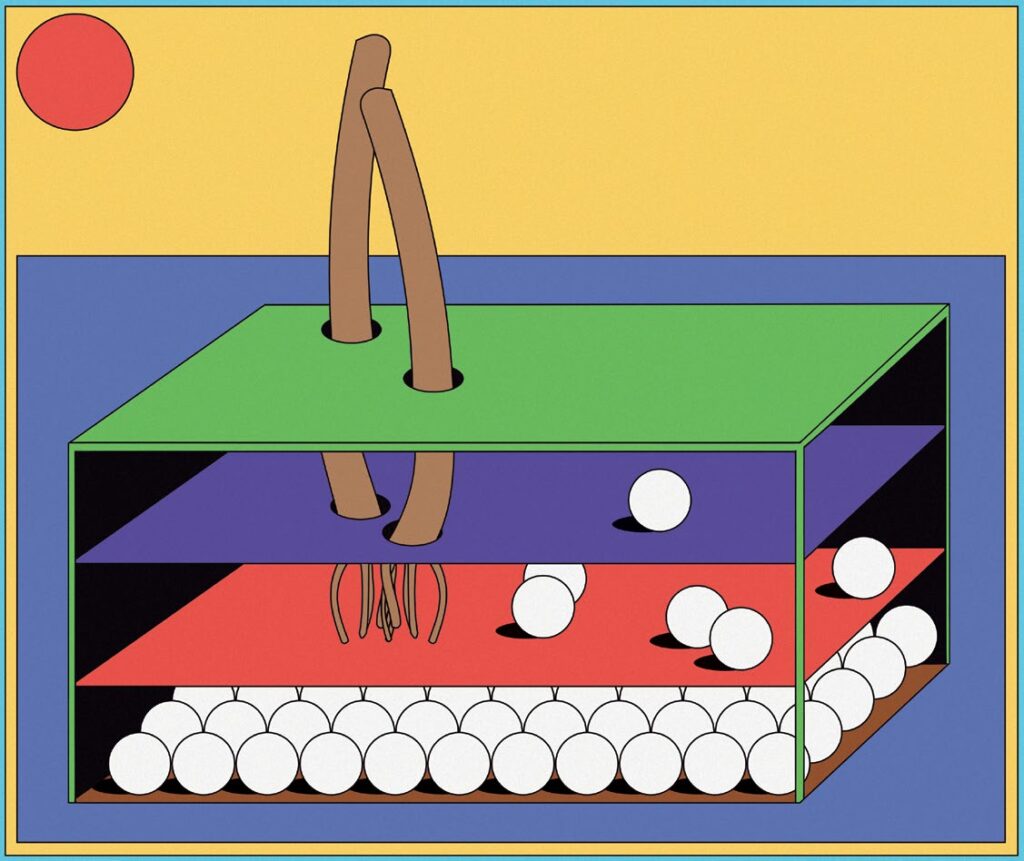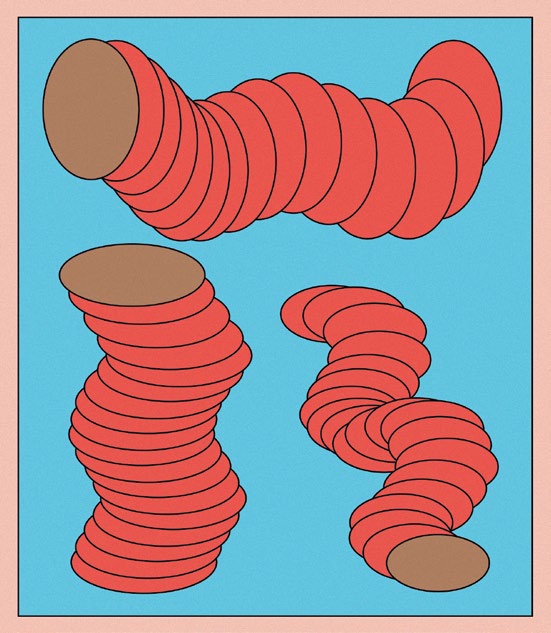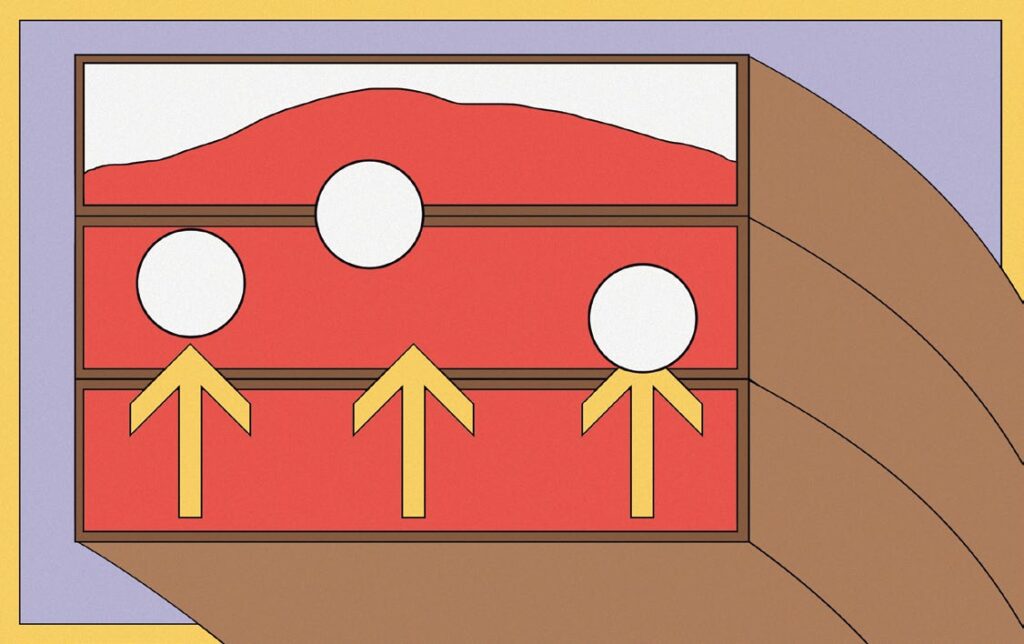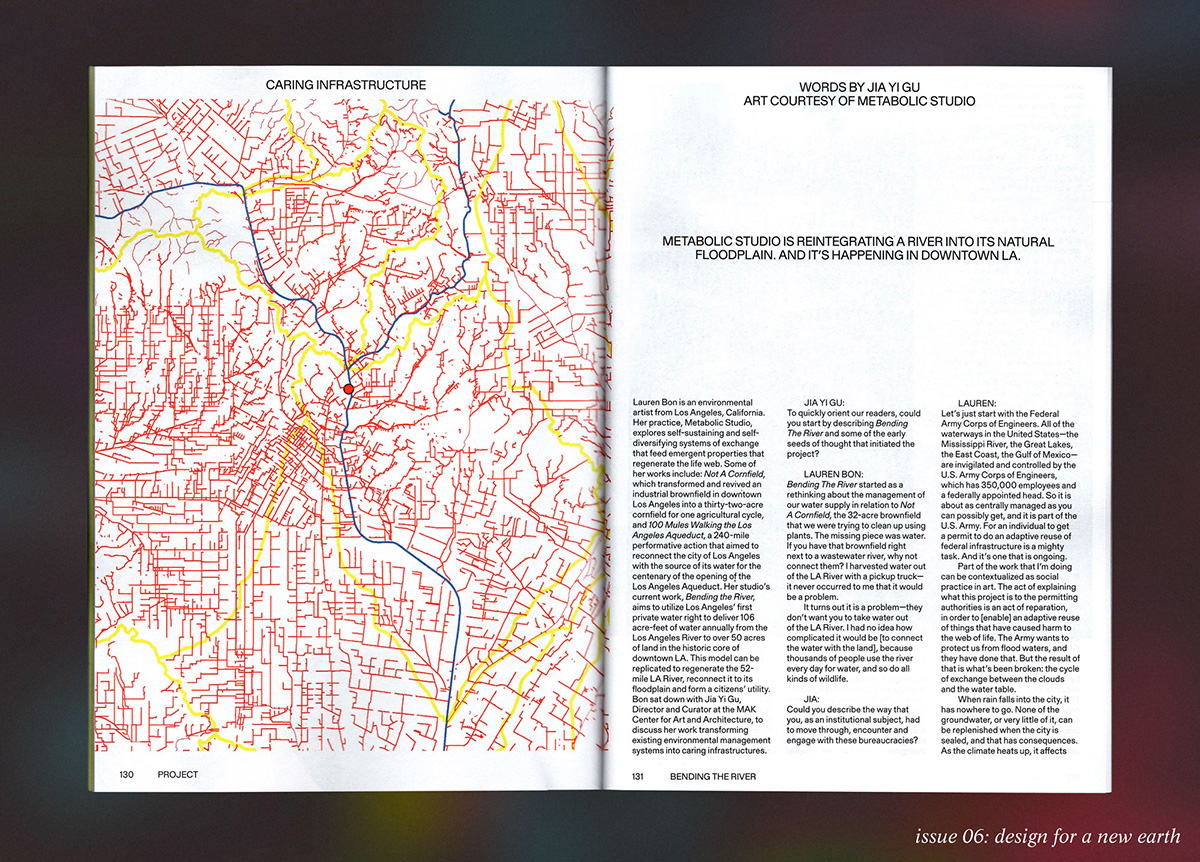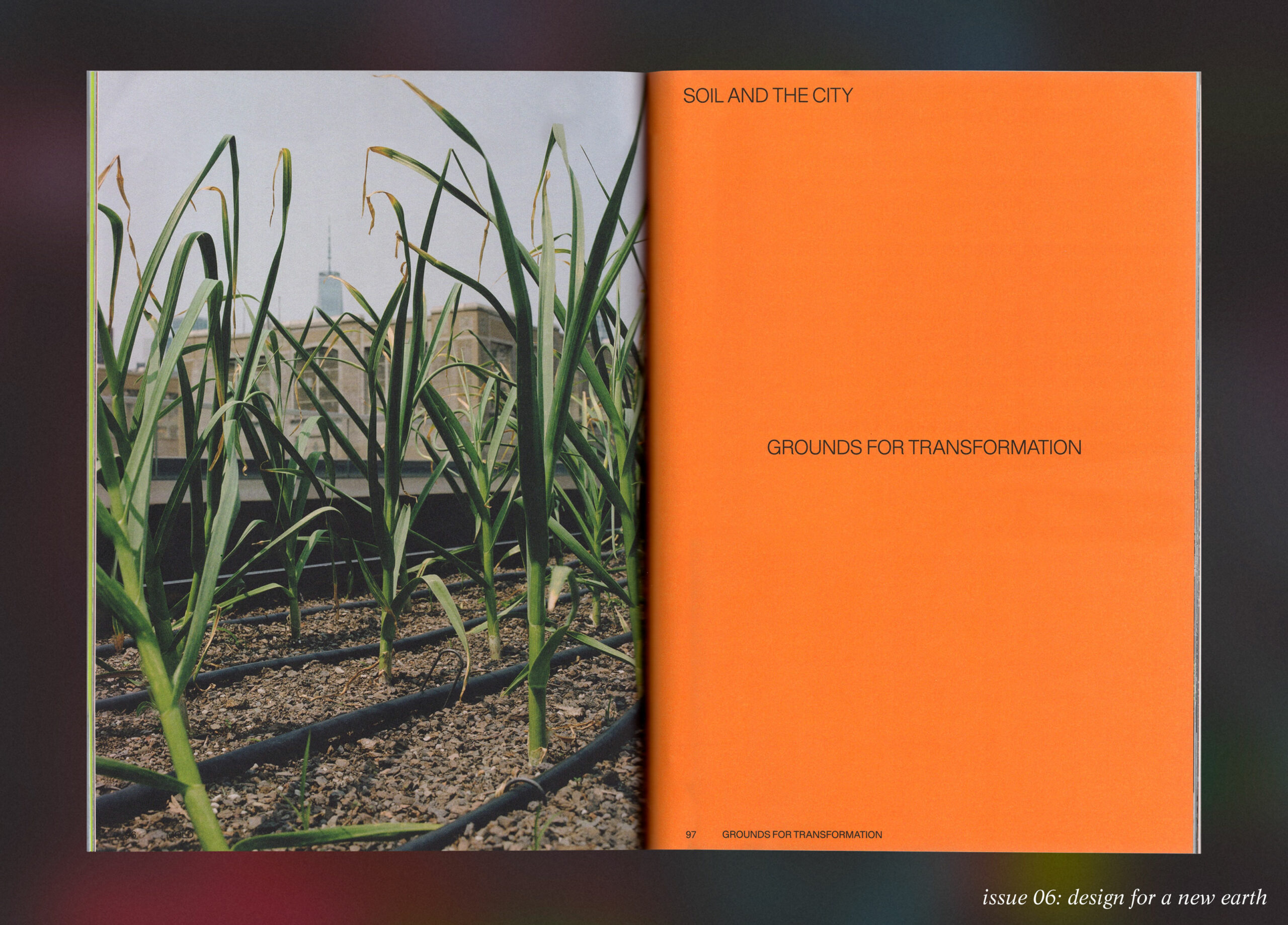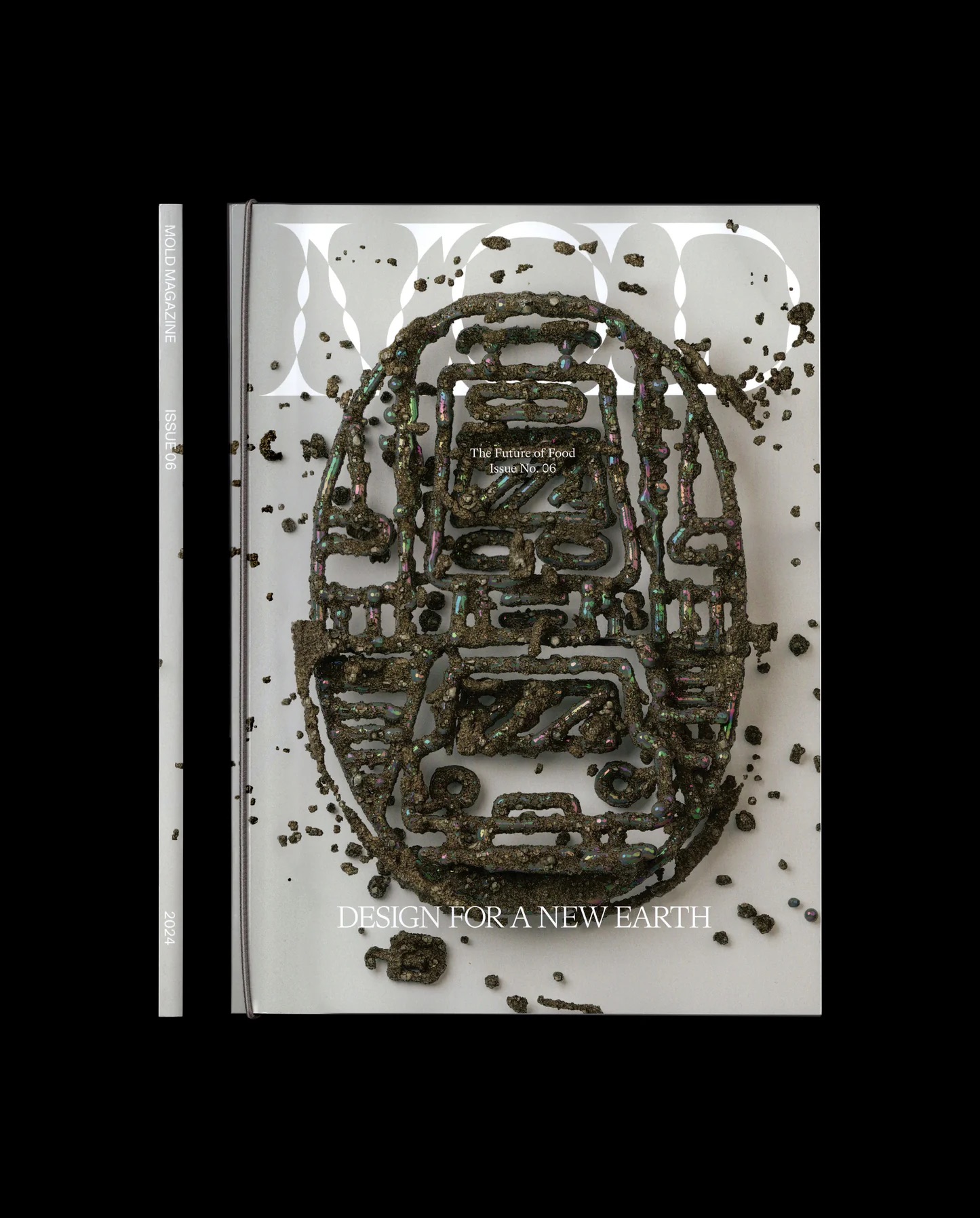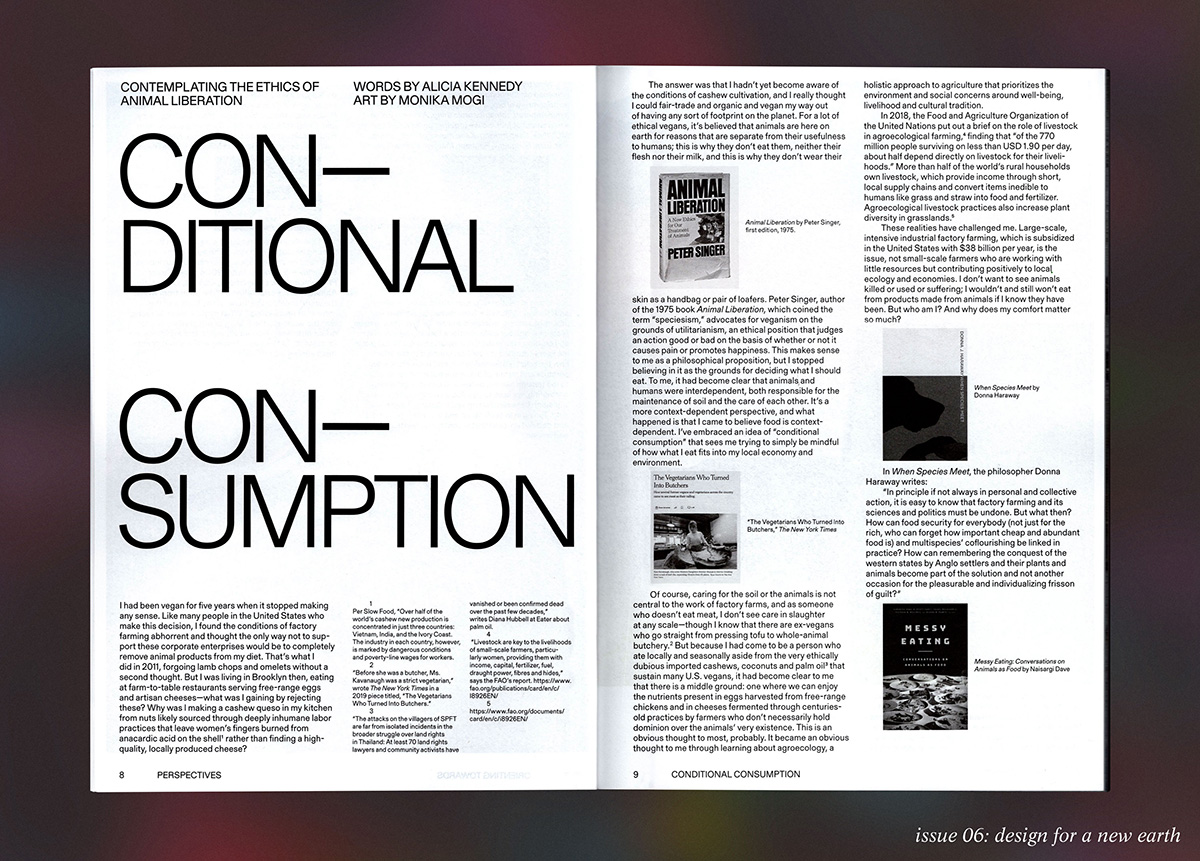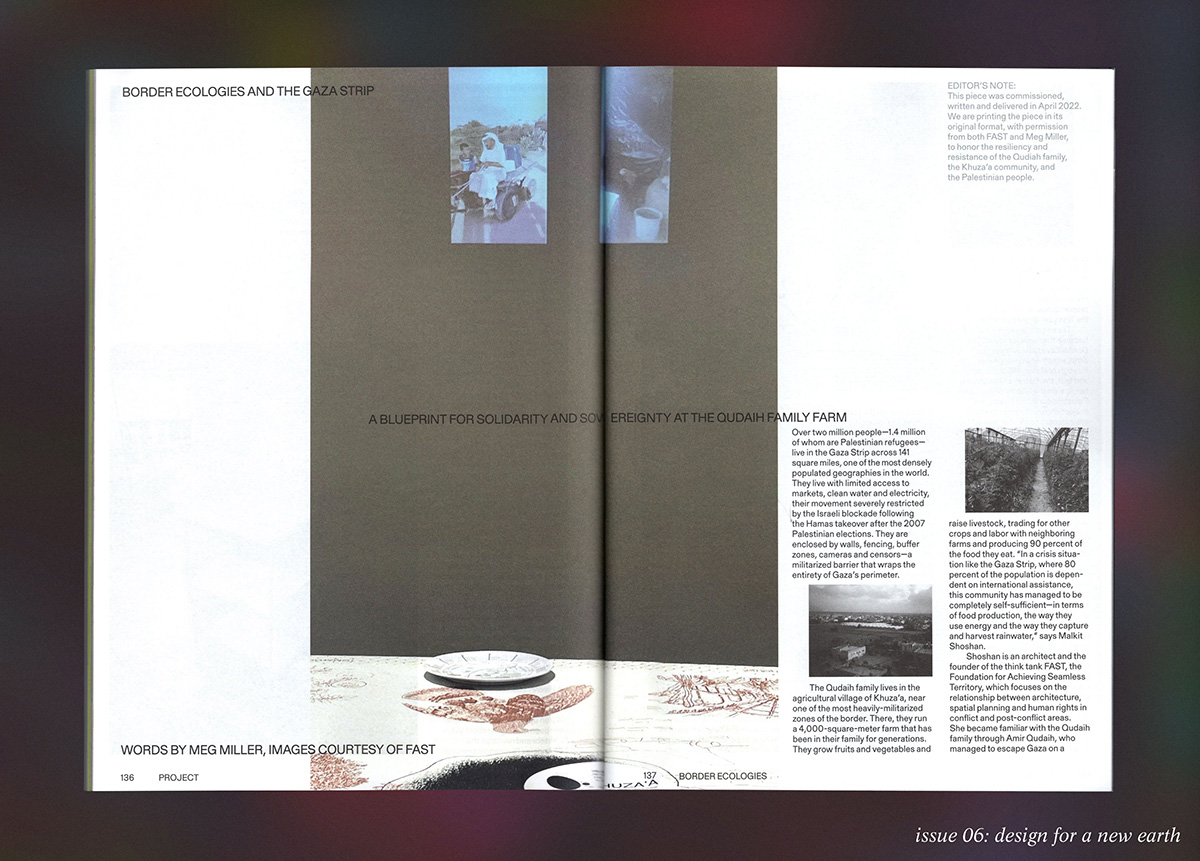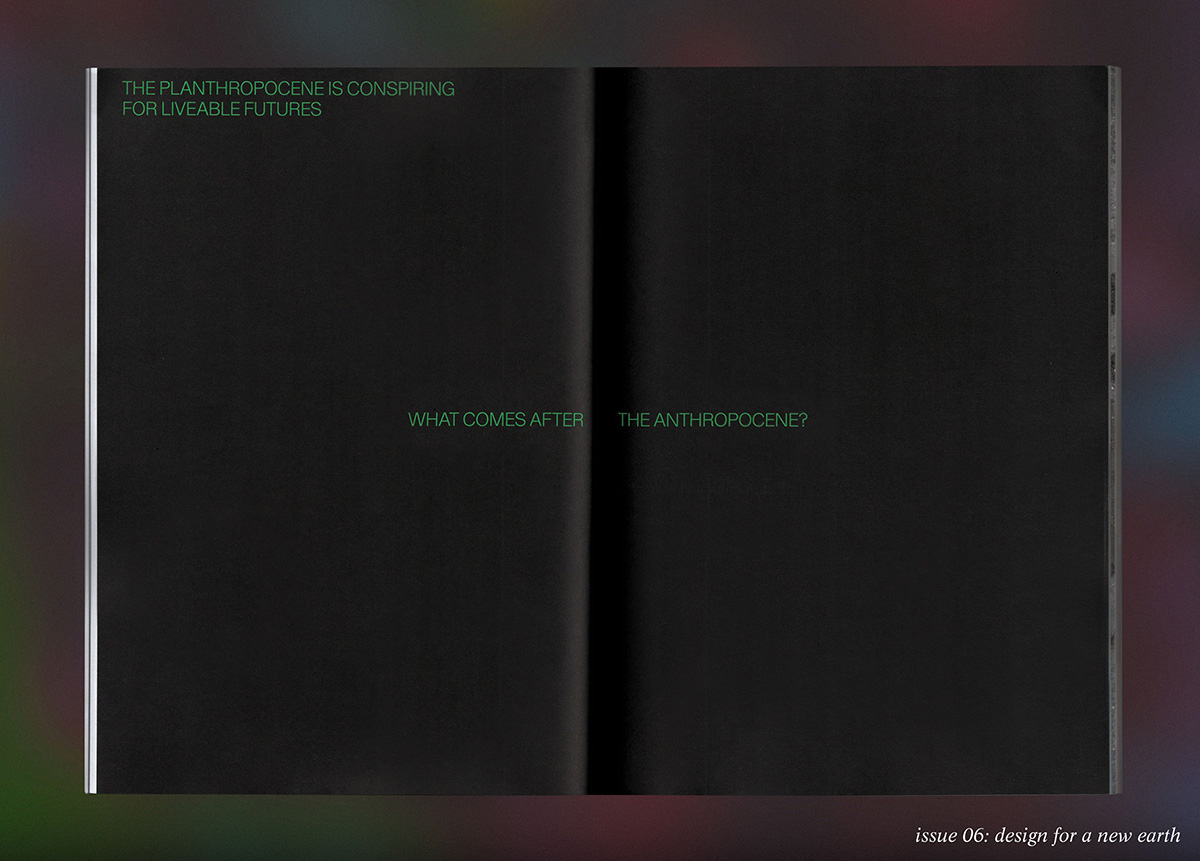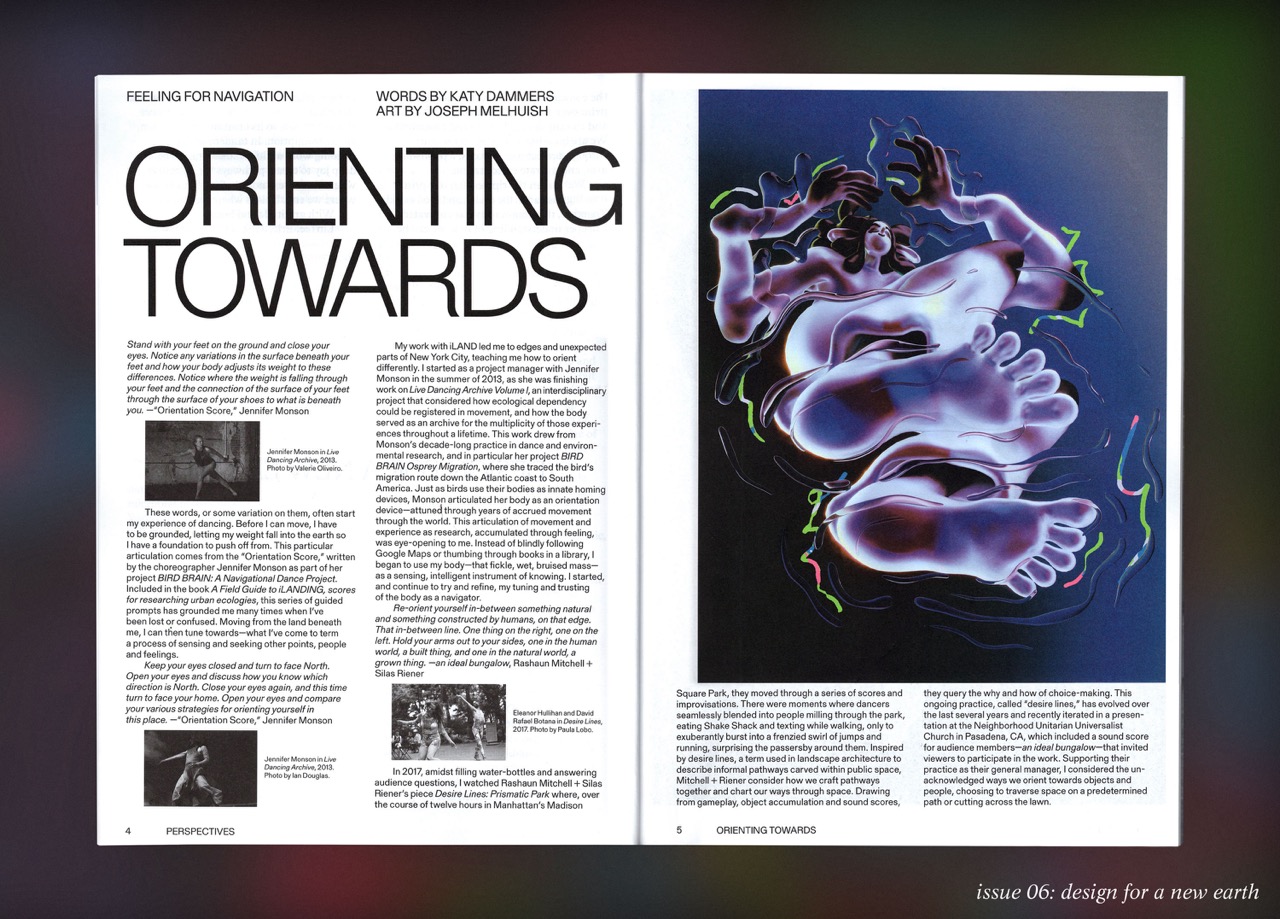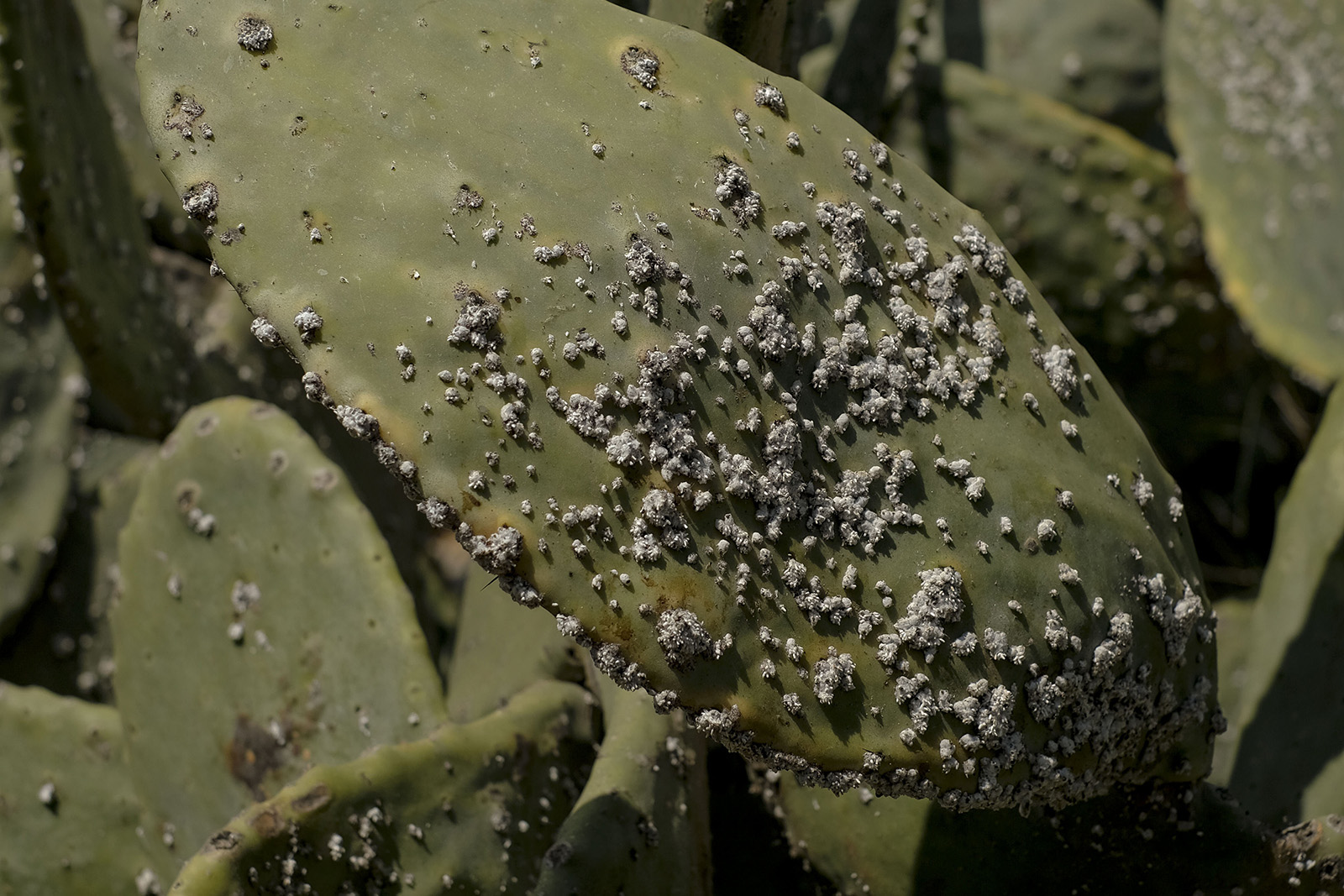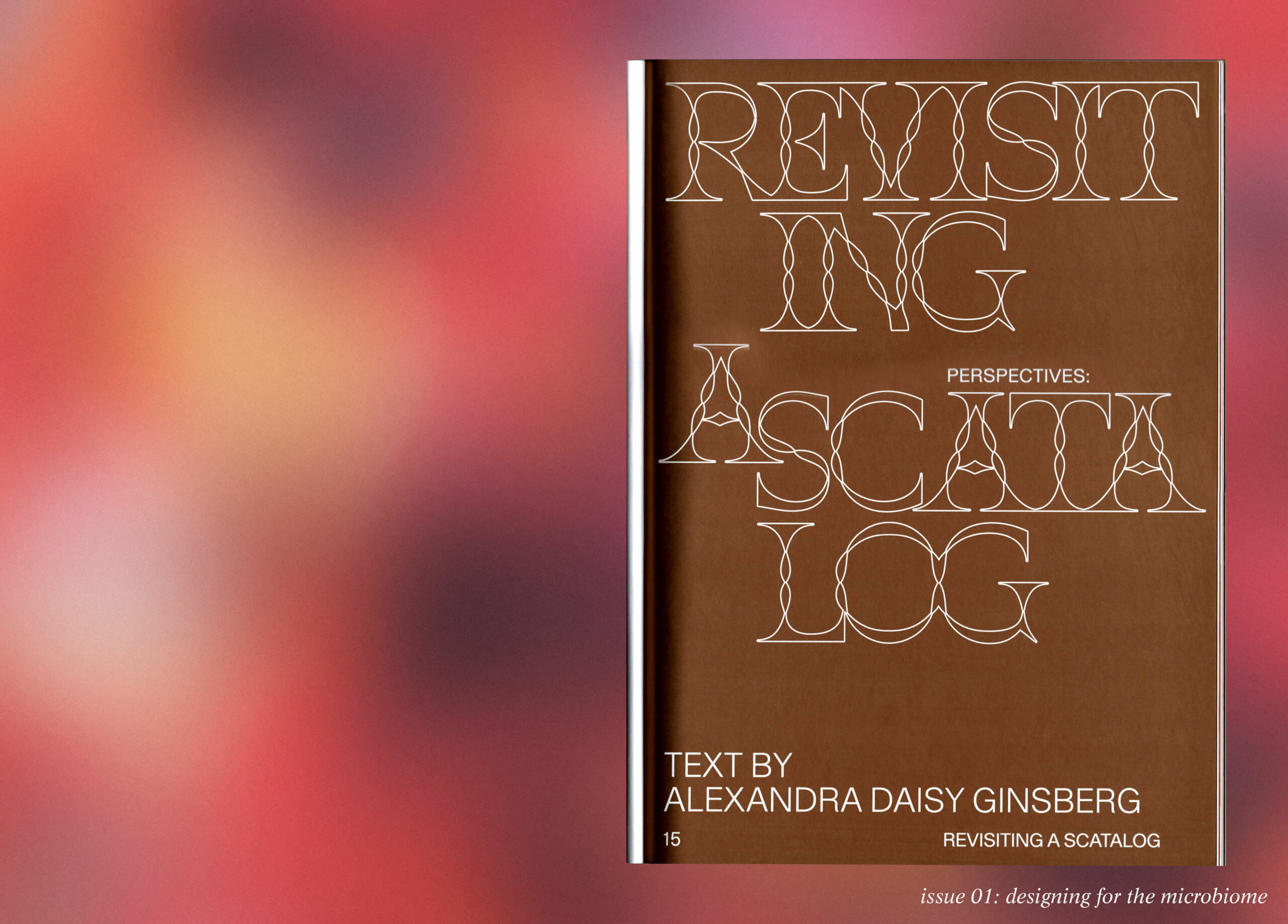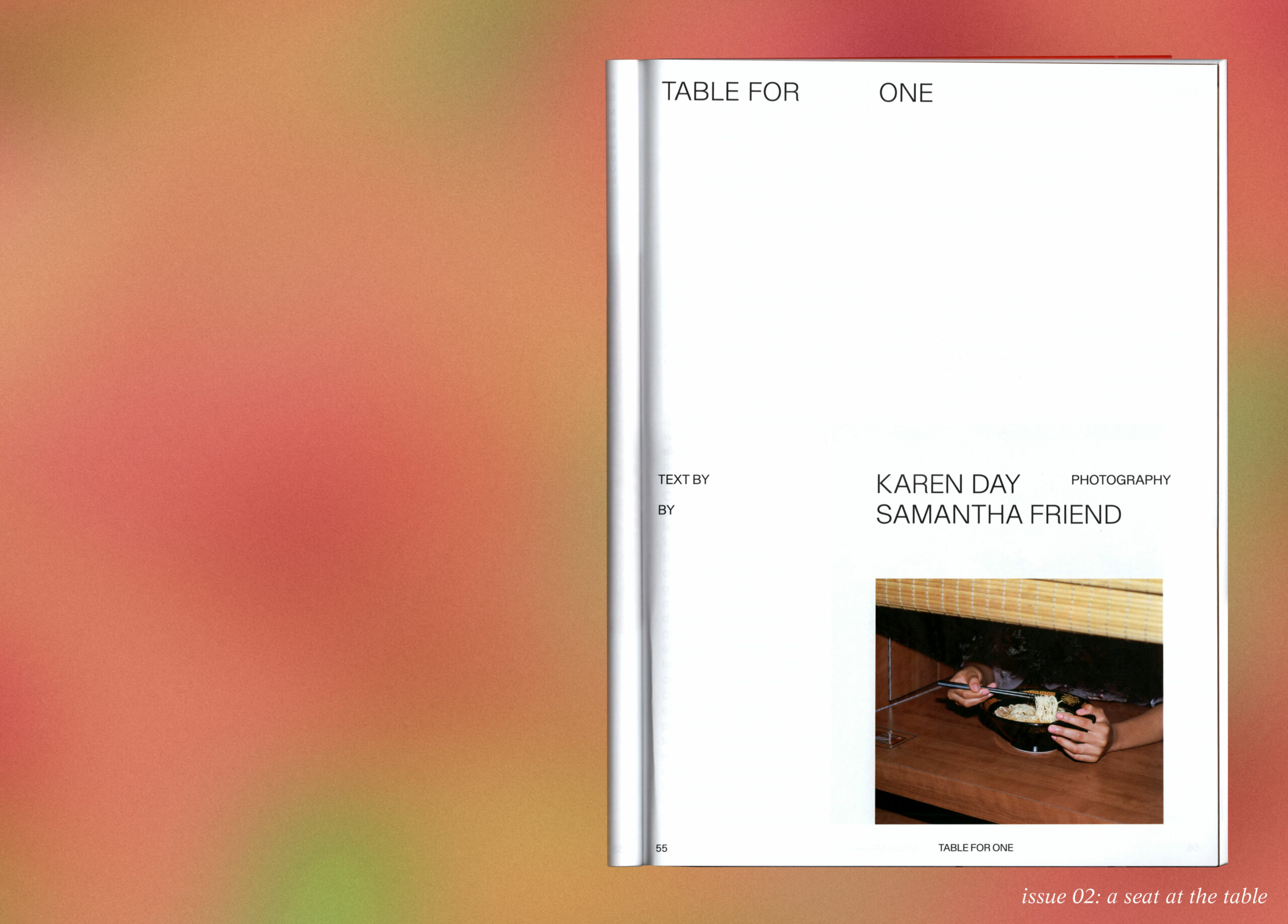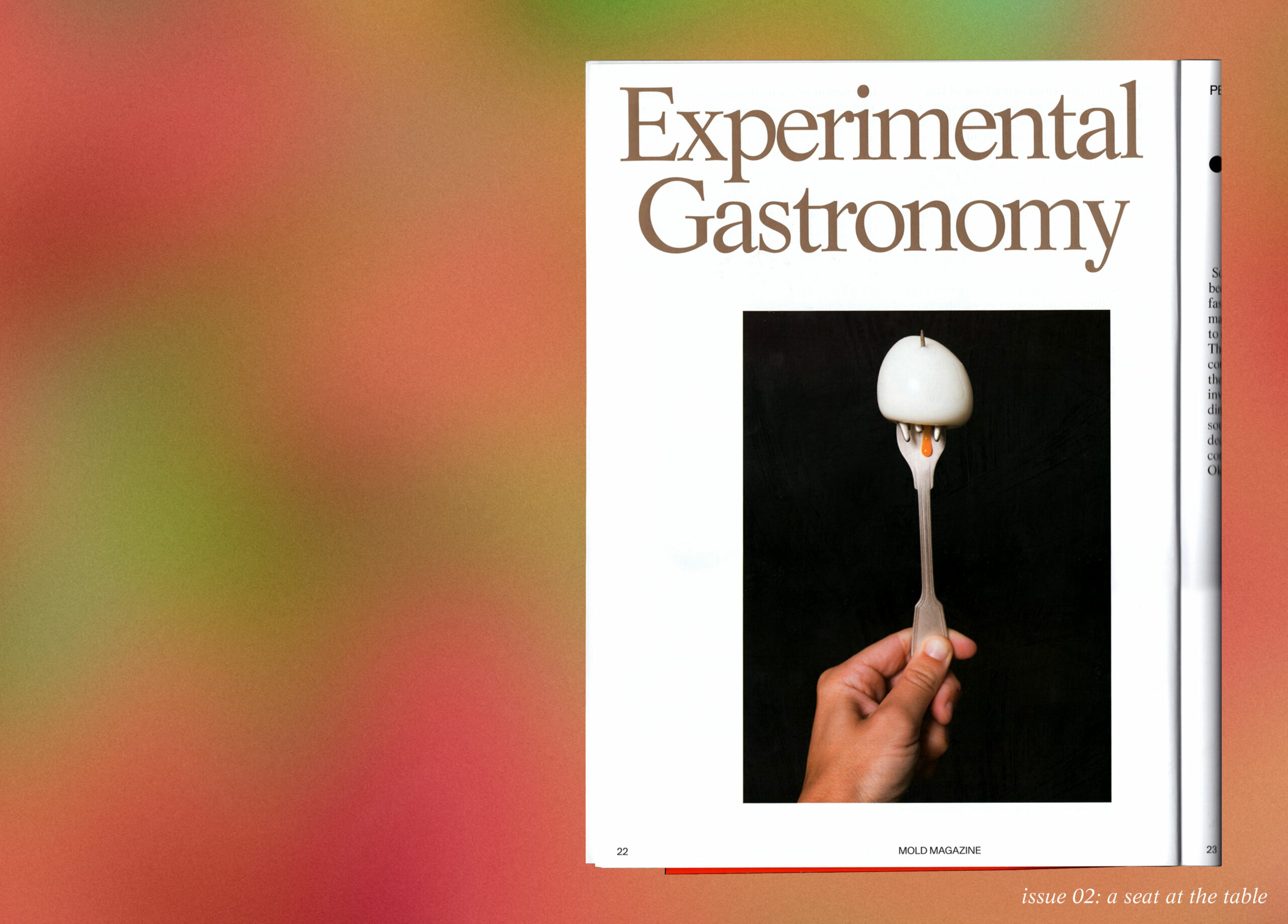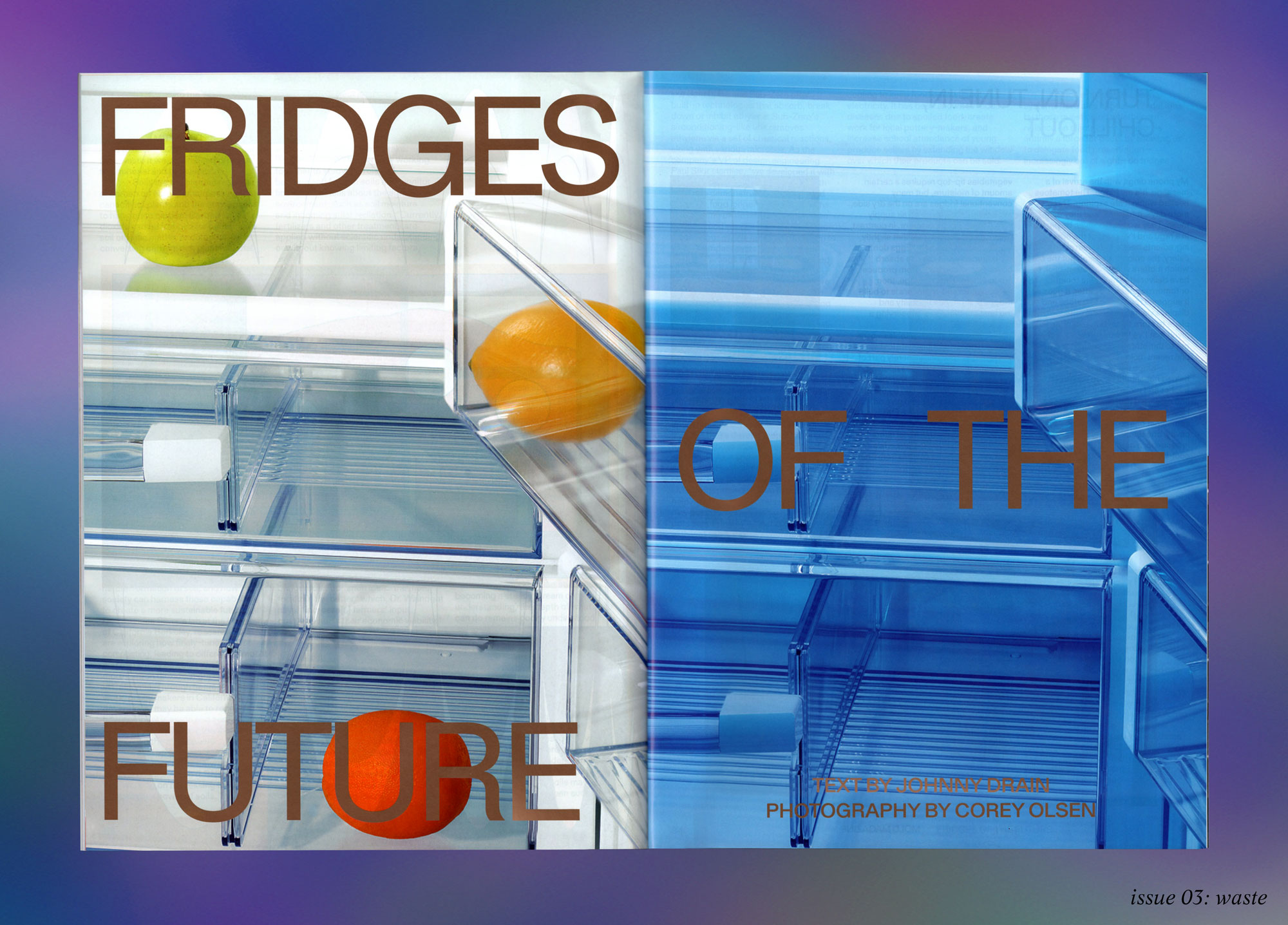From MOLD Magazine: Issue 03, Waste. Order your limited edition issue here.
Soil is a treasure often mistaken for dirt. It masquerades as inert and mundane, an afterthought to the rest of a beautiful landscape. But soil, the stuff that accumulates beneath the forest canopy, under the rhythmic growth of perennial grasses, and between cracks in pavement, is a natural resource like oil and ore. However, unlike other natural materials that society needs, soils are a resource that can be replaced within our lifetimes and moreover, soils can be designed.
Text by Sue Pierre. Art by Cynthia Alfonso.
This last point is one to sit with; its profundity comes like a slow drip. For centuries, humans have known that in order to grow enough food to feed a family, a community, or a civilization, we need soil that is rich in the nutrients plants need for growth. Such soils are not as common as we would like, so humans have learned to supplement what nature does on its own. Over time, the art of building soils from scratch has been refined into a science. Today, the process of building a rich soil from its starting materials, what we call “composting,” has revolutionary potential.
In the most basic sense, compost is an assemblage of elements that move around. The key parts of compost begin as plant and mineral waste materials. A voracious community of bacteria, archaea, and fungi then get to work, breaking these materials down and, over time, stripping them down to smaller molecules that plants can take up. People compost using several different techniques—from the backyard heap to the high tech bioreactor. But the fundamentals remain the same: scraps are mobilized into high quality nutrients with specialized groups of microbes doing the heavy lifting.
What many don’t recognize is that soil, like any other natural resource, has a social and political life all its own. While oil reserves or deep mines seem like more obvious parts of the global economy, soil plays an undervalued role. Fertile soil props up agriculture and supports the economies of entire regions of the globe. Organic matter in soil, like that produced from composting, sequesters carbon from the atmosphere and mitigates climate warming1. As governments around the world face the human, environmental and economic costs of climate change, various groups are turning to soils for solutions.
- R. Lal, “Soil Carbon Sequestration Impacts on Global Climate Change and Food Security” (Science, 11 June 2014)
Pashon Murray is the co-founder and CEO of Detroit Dirt, an urban composting company with a mission for closing the food waste cycle in cities. As a child, watching tons of food fill the landfill her father owned didn’t sit well with Murray. This experience gave rise to her radically simple vision for a more sustainable society. “I am providing a vital resource to make new market spaces in Detroit,” said Murray. That vital resource is soil, which Detroit Dirt makes in large open-air mounds which are built up with food scraps, spent hops from local breweries, and animal manure from the Detroit Zoo. Murray’s commitment to urban composting comes from an awareness of our rapidly changing environment. “We need to be replacing topsoil at the rate that it is being lost,” she said, referring to the high rate at which fertile soil is being eroded. Murray’s vision of expanding urban composting and closing the food waste cycle is not only practical, it’s personal. “Knowing that there are people [in Detroit] who look like me, I wanted to lend my expertise to the city,” said Murray, a Black woman. Her strides towards a zero-waste Detroit have connected Murray to the White House, where she presented the Detroit Dirt business plan to President Obama, and to MIT, where she is a current Director’s Fellow at the MIT Media Lab. “We don’t need to have a $218 billion issue around food waste if we can instead process this material and recover it.”
Soils are the biggest reservoir of carbon on earth, far surpassing the capacity of plants and the atmosphere to hang on to carbon. Carbon dioxide can be trapped for centuries in soil organic matter, or compost, by converting carbon-rich plant material into compounds that are hard for microbes to break down. Researchers across the world are dedicated to understanding the forces that drive the natural formation of soil, and how society can harness those capabilities to create a more sustainable future. In Dr. Whendee Silver’s lab at the University of California Berkeley, researchers are exploring how finely-tuned composting, leading to different compost makeups, may be able to help trap more carbon dioxide in grassland soils in California. Through her team’s work, policy makers in California’s state government may be able to regulate how compost is made and applied, and potentially draw down greenhouse gases from the atmosphere.
Just up the road from Dr. Silver’s lab, researchers at the Lawrence Berkeley National Lab (LBNL) are also working on harnessing the regenerative power of soils. The AR1K Smart Farm Project is a unique partnership between LBNL, the University of Arkansas, and Glennoe Farms in Arkansas that aims to “reduce the need for chemical fertilizers and enhance soil carbon uptake. Researchers and farmers are working together to study the roles of bacteria and fungi in soils and monitor fine-scale details about the agricultural environment, such as soil moisture and incoming solar radiation. “Currently, fertilizers and other treatments are applied without scientific understanding or without knowing limiting factors,” says Dr. Haruko Murakami-Wainright, scientist at LBNL and a lead researcher on the AR1K Smart Farm Project. Her team is combating a dangerously common idea: ‘the more fertilizer, the better,’ which, Dr. Wainright says, “increase[s] farmers’ input cost, and hurts their economic viability.”
Fertilizers are added to commercial farms in quantities well above what the soil can retain, and much of it washes off fields and into waterways, causing huge aquatic die-offs in coastal regions. The AR1K project team is comprised of soil microbiologists, remote sensing experts, statisticians and farm managers who use cutting-edge data-analysis techniques to unite very different types of environmental “big-data,” such as microbial genomes and ecosystem-scale carbon dioxide uptake and release statistics. The team has cultivated naturally-occurring microbes in the lab, selecting those that assist crops in accessing nutrients like phosphorus. Future large-scale application of “microbial amendments” to soils could reduce the use of traditional synthetic fertilizers that farmers apply, and abate some of the environmental problems fertilizers cause. Ultimately, Dr. Wainright and her team aim to show that the foundations of sustainable food systems will rely on understanding the soils themselves. “We are hoping that this project will also increase the awareness about soil and its critical function for food security,” says Wainright.
The alchemy of soil formation—turning the dead and spent into fodder for life itself—has challenged farmers and scientists for centuries. Though the information we once had about soils is becoming a steady stream of understanding, the depth of what soils can do remains poorly understood. Lessons from the urban composting system and soil systems laboratories may be more related than we can currently imagine, requiring more diverse, interdisciplinary teams of people to press the boundaries of what soil can do. Future cross-disciplinary efforts, where groups like Detroit Dirt and the AR1K Smart Farm team sit at the same table, may provide the space needed to uncover sites of innovation based on the intrinsic properties of soil. Such a leap into untrodden territory may reveal that as people endeavor to design and build soils, soils may guide new frameworks for human survival.

